
The Pioneer programs were two series of United States lunar and planetary space probes exploration. The first program, which ran from 1958 to 1960, unsuccessfully attempted to send spacecraft to orbit the Moon, successfully sent one spacecraft to fly by the Moon, and successfully sent one spacecraft to investigate interplanetary space between the orbits of Earth and Venus. The second program, which ran from 1965 to 1992, sent four spacecraft to measure interplanetary space weather, two to explore Jupiter and Saturn, and two to explore Venus. The two outer planet probes, Pioneer 10 and Pioneer 11, became the first two of five artificial objects to achieve the escape velocity that will allow them to leave the Solar System, and carried a golden plaque each depicting a man and a woman and information about the origin and the creators of the probes, in case any extraterrestrials find them someday.

Cassini–Huygens, commonly called Cassini, was a space-research mission by NASA, the European Space Agency (ESA), and the Italian Space Agency (ASI) to send a space probe to study the planet Saturn and its system, including its rings and natural satellites. The Flagship-class robotic spacecraft comprised both NASA's Cassini space probe and ESA's Huygens lander, which landed on Saturn's largest moon, Titan. Cassini was the fourth space probe to visit Saturn and the first to enter its orbit, where it stayed from 2004 to 2017. The two craft took their names from the astronomers Giovanni Cassini and Christiaan Huygens.

The Pioneer Venus project was part of the Pioneer program consisting of two spacecraft, the Pioneer Venus Orbiter and the Pioneer Venus Multiprobe, launched to Venus in 1978. The program was managed by NASA's Ames Research Center.
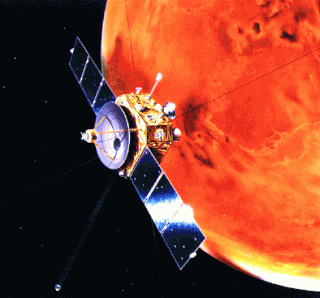
Nozomi was a Japanese Mars orbiter that failed to reach Mars due to electrical failure. It was constructed by the Institute of Space and Astronautical Science, University of Tokyo and launched on July 4, 1998, at 03:12 JST with an on-orbit dry mass of 258 kg and 282 kg of propellant. The Nozomi mission was terminated on December 31, 2003.
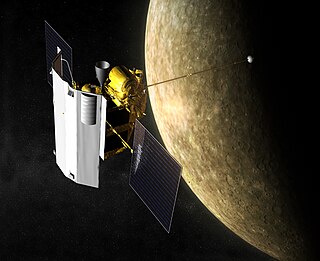
MESSENGER was a NASA robotic space probe that orbited the planet Mercury between 2011 and 2015, studying Mercury's chemical composition, geology, and magnetic field. The name is a backronym for "Mercury Surface, Space Environment, Geochemistry, and Ranging", and a reference to the messenger god Mercury from Roman mythology.

This article provides a timeline of the Cassini–Huygens mission. Cassini was a collaboration between the United States' NASA, the European Space Agency ("ESA"), and the Italian Space Agency ("ASI") to send a probe to study the Saturnian system, including the planet, its rings, and its natural satellites. The Flagship-class uncrewed robotic spacecraft comprised both NASA's Cassini probe, and ESA's Huygens lander which was designed to land on Saturn's largest moon, Titan. Cassini was the fourth space probe to visit Saturn and the first to enter its orbit. The craft were named after astronomers Giovanni Cassini and Christiaan Huygens.

The Solar Orbiter (SolO) is a Sun-observing probe developed by the European Space Agency (ESA) with a National Aeronautics and Space Administration (NASA) contribution. Solar Orbiter, designed to obtain detailed measurements of the inner heliosphere and the nascent solar wind, will also perform close observations of the polar regions of the Sun which is difficult to do from Earth. These observations are important in investigating how the Sun creates and controls its heliosphere.
The New Frontiers program is a series of space exploration missions being conducted by NASA with the purpose of furthering the understanding of the Solar System. The program selects medium-class missions which can provide high science returns.

Manned Venus Flyby was a 1967–1968 NASA proposal to send three astronauts on a flyby mission to Venus in an Apollo-derived spacecraft in 1973–1974, using a gravity assist to shorten the return journey to Earth.

Venera-D is a proposed Russian space mission to Venus that would include an orbiter and a lander to be launched in 2029. The orbiter's prime objective is to perform observations with the use of a radar. The lander, based on the Venera design, would be capable of operating for a long duration on the planet's surface. The "D" in Venera-D stands for "dolgozhivuschaya," which means "long lasting" in Russian.
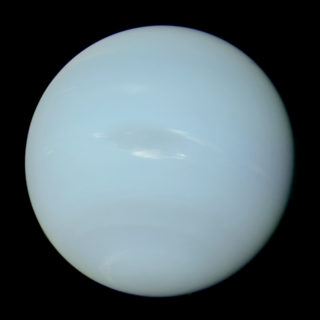
Neptune has been directly explored by one space probe, Voyager 2, in 1989. As of 2024, there are no confirmed future missions to visit the Neptunian system, although a tentative Chinese mission has been planned for launch in 2024. NASA, ESA, and independent academic groups have proposed future scientific missions to visit Neptune. Some mission plans are still active, while others have been abandoned or put on hold.
The Solar Sentinels was a series of proposed space missions to the Sun. Solar Sentinels was proposed in 2006 in conjunction with other Sun missions, and another simpler proposal was submitted in 2008.
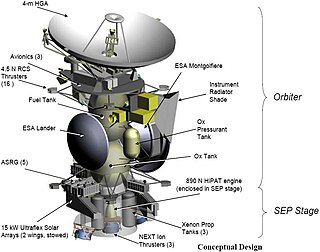
Titan Saturn System Mission (TSSM) was a joint NASA–ESA proposal for an exploration of Saturn and its moons Titan and Enceladus, where many complex phenomena were revealed by Cassini. TSSM was proposed to launch in 2020, get gravity assists from Earth and Venus, and arrive at the Saturn system in 2029. The 4-year prime mission would include a two-year Saturn tour, a 2-month Titan aero-sampling phase, and a 20-month Titan orbit phase.
Kronos is a concept mission to Saturn. It is aimed at detailed study of the chemical composition of Saturn's atmosphere, gravity and magnetic fields. The proposal consists of the solar powered carrier spacecraft, two atmospheric probes and (possibly) two small probes for the close-up imaging of the Saturnian rings.

The Planetary Science Decadal Survey is a serial publication of the United States National Research Council produced for NASA and other United States Government Agencies such as the National Science Foundation. The documents identify key questions facing planetary science and outlines recommendations for space and ground-based exploration ten years into the future. Missions to gather data to answer these big questions are described and prioritized, where appropriate. Similar decadal surveys cover astronomy and astrophysics, earth science, and heliophysics.

The Saturn Atmospheric Entry Probe is a mission concept study for a robotic spacecraft to deliver a single probe into Saturn to study its atmosphere. The concept study was done to support the NASA 2010 Planetary Science Decadal Survey
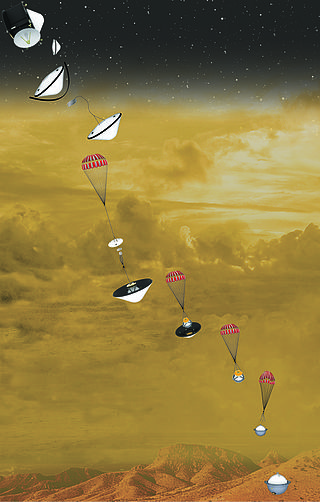
DAVINCI is a planned mission for an orbiter and atmospheric probe to the planet Venus. Together with the separate VERITAS mission, which will also study Venus, it was selected by NASA on 2 June 2021 to be part of their Discovery Program. Its acronym is inspired by Leonardo da Vinci in honor of his scientific innovations, aerial sketches and constructions.
Venus In Situ Atmospheric and Geochemical Explorer (VISAGE) is a proposed Venus lander mission that would perform atmospheric and surface science investigations.
Venus Origins Explorer (VOX) is a concept orbiter mission to Venus.

OCEANUS is a mission concept conceived in 2016 and presented in 2017 as a potential future contestant as a New Frontiers program mission to the planet Uranus. The concept was developed by the Astronautical engineering students of Purdue University during the 2017 NASA/JPL Planetary Science Summer School. OCEANUS is an orbiter, which would enable a detailed study of the structure of the planet's magnetosphere and interior structure that would not be possible with a flyby mission.























